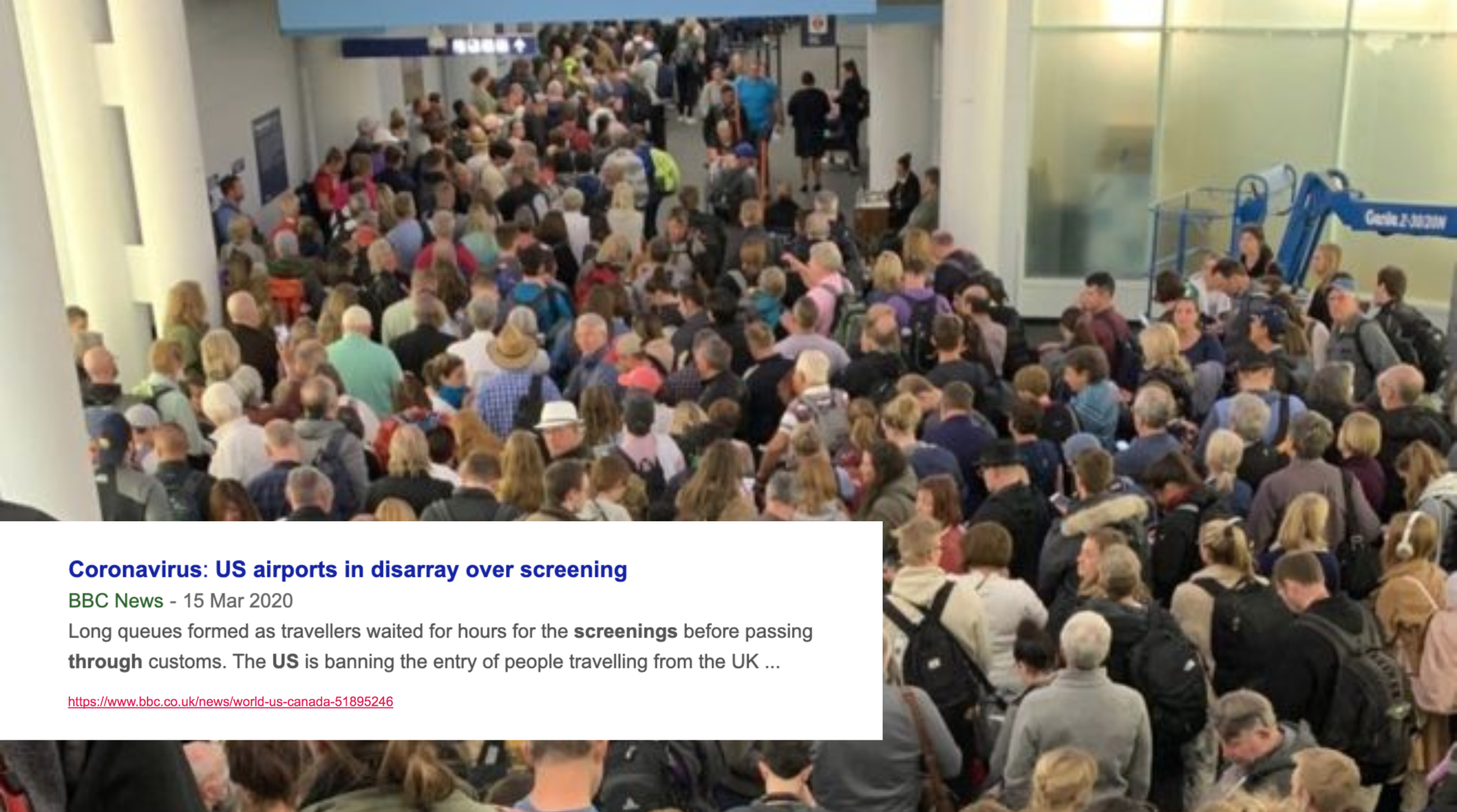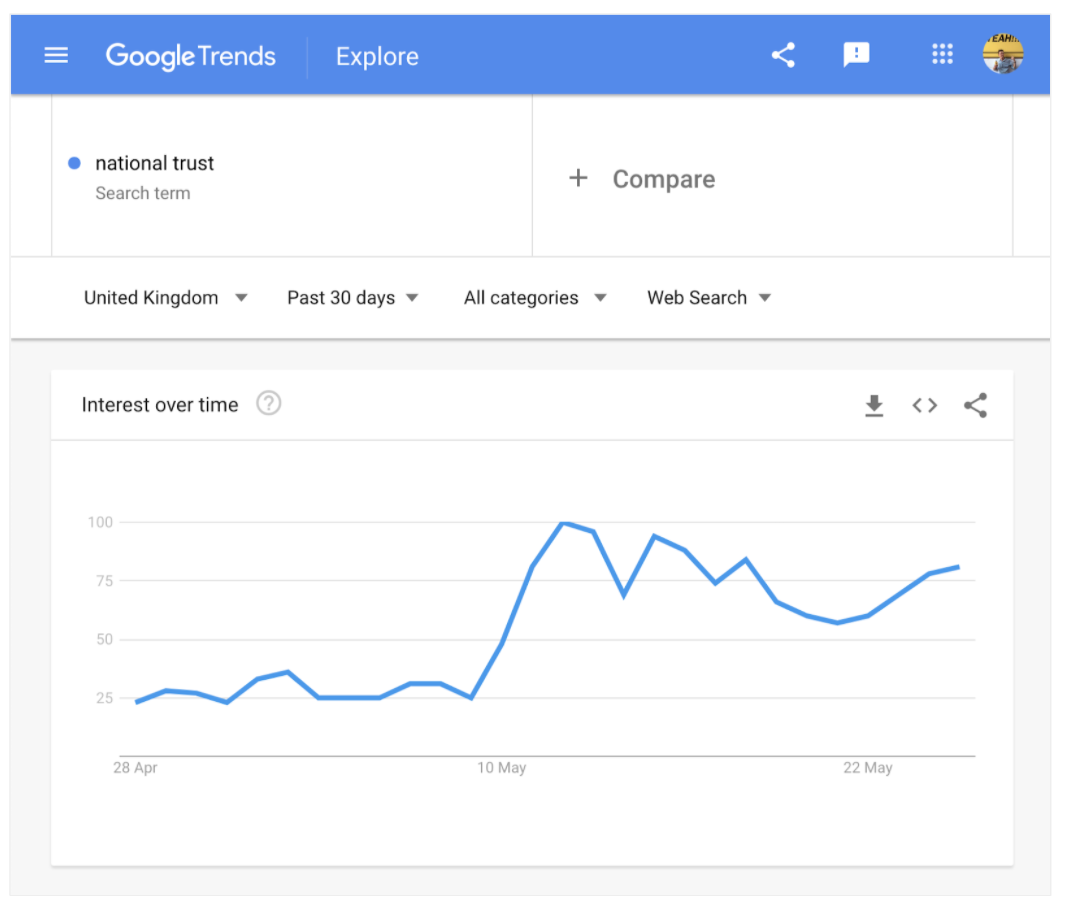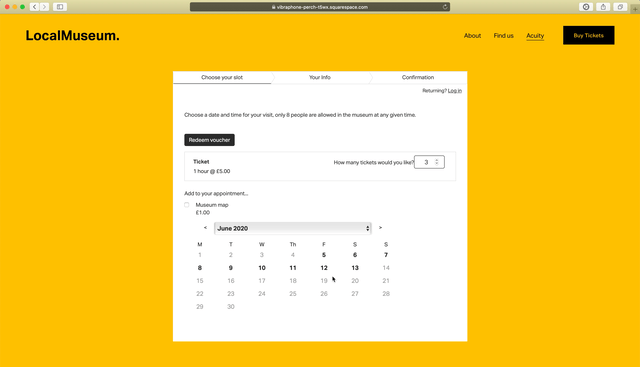Reopening venues & social distancing: How digital can help
Since the beginning of lockdown here in the UK, we have been working with the Association of Scottish Visitor Attractions. We have been providing free webinars to their community in a bid to help Scottish venues survive during (and thrive after) the coronavirus pandemic – with a particular focus on how digital can help them do this.
But, in this blog, we will be focusing on how venues can adapt to social distancing through the use of booking software and how harnessing digital communication can keep visitor audiences informed and prepared throughout the reopening process. A recent survey conducted by ASVA highlighted that 75% of members cite social distancing measures as having a major impact on capacity. So, we will focus on just that and how might we manage this efficiently and safely! To summarise:
We’ll take a brief look at what reopening might look like for venues as we navigate our way out of lockdown.
We’ll try to understand how social distancing will remain a key consideration for some time and how it’s been achieved elsewhere.
And, we’ll take a look at how digital tools might assist you in this – without breaking the bank.
“Museums, galleries, cinemas, and libraries can open, subject to physical distancing and hygiene measures.”
Phase 3 guidance from the Scottish government
Both the UK and devolved governments have set out a phased approach to returning to ‘normal’, the reopening of culture and tourist attractions and venues is currently pencilled in for ‘phase 3’. Moving into this phase will be reliant on ensuring the virus remains under control and cases continue to decline. Under current guidance, venues will be expected to be allowed to open under two conditions:
There are sufficient hygiene measures are in place at the venue
Physical distancing measures are enforced at the venue
One thing I want to focus is the physical distancing measures and how they can be enforced, as I know this is a topic that’s been raised a lot recently for visitor attractions in terms of controlling footfall.
Screenshot from digital BBC report showing poor social distancing at US airport
As I’m sure many of you have observed, it’s not always been easy to maintain social distancing in practice. Whilst the rules appear simple, they often start to fall apart once too many individuals have already gathered in a particular location. There are plenty of news stories about areas where there are chaotic queues and rushes, especially where people have flocked to tourist destinations and certain shops upon reopening.Looking at the above example from inside a US airport, we can see passengers were crammed into queues at the airport whilst awaiting testing. Though ensuring everyone was being tested was well-intentioned, these measures didn’t really work in practice. Grouping so many people together ultimately defeats the main objective which, fundamentally, is to stay away from those who may be infected in the first place.
How do we handle large volumes of people and social distancing during reopening?
As essential shops, supermarkets have stayed open throughout the crisis and they’ve done a great job supporting their communities; supplying customers with essential goods and food. They’re among some of the busiest places around at the moment, and they’ve all introduced a series of rules to allow shoppers to visit safely and easily.As they have been one of the first, in terms of facing social distancing measures, they have introduced guidance and rules to combat it, such as:
Ensure distancing of 2 meters is possible within the shop
Ensure that a suitable number of people are within the shop at any time
Optimise routes through and around the shop to minimise contact with objects and others
Avoid queues and bottlenecks where possible
I think we can learn a lot from the shops, and also seek to emulate their rules ourselves. People are already familiar with the social distancing concepts they’ve introduced and they’ve been largely successful.One thing that is clear, is that it’s impractical to assume that people will be able to maintain physical distancing once there are already too many people in a given spot, so prevention is going to be key. It’s also a safe assumption that introducing these measures will impact the experience and volume of visitors that you might normally facilitate. It will undoubtedly throw up some issues that will make them question whether it’s wise to visit.So, it’s going to be really important to set expectations to visitors on what they might expect to happen during their visit.
What are visitors concerned about when it comes to reopening?
Coronavirus is well ingrained in the publics’ minds now and there is definitely an awareness, and perhaps a fear, that unnecessary travel should be avoided – I expect this will continue into the foreseeable future.According to a recent Global Web Index study, just 9% of the UK public say they intend to return immediately to venues. As an industry, this means you have to address a lot of factors to instil confidence into visitors before they can confidently make a decision to visit.In terms of these concerns, Global Web Index also looked into what safety factors the public were concerned about, and I just wanted to highlight some of those:
64% of people felt social distancing was one of the most important safety factors
49% of people felt restrictions on how many people can enter was one of the most important
39% of people felt cashless payment options was one of the most important
60% of people felt regular cleaning/disinfection was one of the most important
These statistics, whilst not surprising, show that we need to clearly demonstrate to our visitors to show that we are tackling their concerns.
How can we help alleviate these concerns and set expectations?
Image from a trip to Aira Force which shows good social distancing measures
Here’s a photo from my trip to Aira Force in the Lake District last weekend and I can say I was pleasantly surprised by the whole experience. If you get the chance to visit, I’d recommend it!The good news was it was clear to see many people are still keen to get out and visit places such as this, and everybody there respected the rules enforced. At the venue, social distancing measures were in place; including a one-way route, advice to take it slow, and signage that was consistently displayed around the venue to remind visitors of how to stay safe.The trip was a success, there were no queues or traffic, I never felt endangered, and I was free to visit almost as if it was a normal day; The National Trust had managed to open up both safely and efficiently.
So, how did they manage this?
Well, firstly, it wasn’t possible to visit without first booking a time slot in advance and, before allowing you to book, the National Trust had made sure that people were well informed about how to visit every step of the way. From researching online to booking a visit, and during the visit. The National Trust had made use of every avenue and channel to inform people of this, let’s take a quick look at how they did it:
Set expectations prior to accepting any visitors
News of the National Trust reopening has led to a vast increase in those searching via Google. Understandably, people are anxious to get outside and explore again.
Digital screenshot from Google Trends which shows the interest in national trust reopening
So, it’s important that, while news spreads of venues reopening, that visitors are given the information they need before any “rush”, and that we ensure we’re explaining how to plan a visit, and how to behave safely:
Naturally, less contact is the best option here, protecting both your staff and visitors
Consider dedicated landing pages around how you might reopen and what considerations visitors need to bear in mind
Use digital channels to communicate to customers where possible and set expectations before “the rush”
Ensure that it’s clear to customers to avoid the venue until confirmed appointments
As I found out for myself last weekend, the National Trust in England has been quick to pre-empt this, ensuring that messaging is consistently made available on every channel, let’s take a look at some of those…
Email and social messages to members
First up, I want to look at the use of social media and emails to reach out to existing followers and members.
Digital comms examples from National Trust about their reopening and social distancing
As of February 2019, the National Trust had around 5.5 million members. Naturally, these make up a large proportion of the National Trusts visitors. A quick win for them was to engage their existing audience and prepare those most loyal to them. A simple email and well-thought landing page, alongside some personal messages on social, would allow people to start planning to return and generate some positivity and engagement.
Set expectations in advance to your member base
Engaging those most loyal is a quick win
Use these channels to encourage these people to plan their visit, linking them to a dedicated COVID landing page
Adapting your website
The website’s primary focus is generally to advise visitors and members of their venues and how to visit.
Screenshot of the National Trust website homepage reopening
National Trust has made sure to interrupt visitors at the homepage, utilising the hero banner to include key messaging – welcoming visitors back. This then links to a dedicated landing page which provides guidance around how to plan your visit in the current circumstances.
Reopening landing page from the National Trust informing about social distancing at the venue
As you can see, a wide variety of questions are covered on this landing page, such as:
What venues are open, and in what capacity
Instructions on how to book
What to do when arriving
How to behave whilst there
What facilities will be provided
FAQ’s
This type of information is great as it does two things; it gives visitors the confidence they can visit safely and ensures that they are familiar with the safety measures before a visit – hopefully increasing compliance.Given the National Trust is not a singular venue, they’ve also altered all of their venue pages to feature prominent messaging explaining limitations around visits; explaining the need to book in advance, with calls to action on how to as well.
Individual screenshots from the National Trust about venue reopenings
The National Trust has managed to inform visitors about their reopening on virtually every digital channel and at every touchpoint, because of this, they can now allow customers to book their visit in confidence.
Booking systems
So, once you’re confident that your audience is sufficiently prepared for a visit, you’ll want to ensure that users can arrange to visit in a controlled manner. One way you can achieve this easily is with an online booking system which allows them to book time slots.I’m aware that many organisations that have little to no existing booking capability and appreciate that many organisations may have limited resource right now. With that in mind, I’ve had a brief look at solutions that don’t require much initial outlay in terms of expense and effort, as well as required expertise when it comes to setting them up.It’s worth noting, there are a wealth of options out there; all with different pricing models, integrations, and options that you should investigate. Most offer free demos and trials, but I just wanted to take a quick look at just two of these tools that have caught my eye recently.
Acuity Scheduling
First up, is Acuity Scheduling, this software is now owned by Squarespace, an online website generator that some of you may be familiar with. Acuity Scheduling is typically aimed at those booking appointments rather than events or visiting attractions. However, with a fair bit of tweaking, it does allow for customising the terms used in the interface and arranging appointments in a way that would better suit venues.
Screenrecording of digital appointment booking system Acuity
One of the main benefits of this is that it integrates into the Squarespace platform quite well, which is a plus if you’re already using it, however, it can also be linked to as a standalone page if you don’t! It includes its own payment processing options; such as PayPal, Stripe, and Square; meaning you don’t have to worry about payment providers. It also has email confirmations and SMS reminders baked in.It includes a dashboard too, allowing you to track attendees (and export a list of them if need be) and see a calendar view of bookings. However, it also has its limitations, for example, multiple ticket prices and options aren’t really available; given this is not Acuity’s true purpose. So, it’s well worth considering other options if this is the case.The costs for Acuity Scheduling ranges from a fixed monthly cost of £11-37 per month
Eventbrite
One of the other examples you may be more familiar with or may have already used yourself – Eventbrite.
Eventbrite allows you to use their platform to link to and also provides an embed code, so you can easily integrate it into most websites in minutes.Without a doubt, one of the biggest benefits to Eventbrite is that if your event is free, it’s free to use as well. Which is great as it’s feature-rich and has a really nice interface. If you do have paid tickets, then Eventbrite will charge a commission, however, you get to choose whether customers pay the booking fee, or whether you want to take the hit yourself. And, since Eventbrite handles all payment processing (including PayPal payments) for you, they take this off the top of your ticket price – meaning no outlay for you financially. So, whilst the costs might be steep at prices ranging from £0.49 + 3.5-6.5% per ticket, there are no setup fees or need for investment in any other systems, creating a low barrier to entry.
Much like Acuity, Eventbrite handles the email side of things for you; as well as allowing you to sell add-ons, export visitor attendee lists, and multiple social/marketing integrations to help your market and sell them. It’ll even generate pdf tickets for you and email them out!I’m aware many of you might not be familiar with digital event booking and I appreciate that ticket booking platforms can often be a daunting concept for many.
Having looked at Eventbrite, I was blown away at how easy it was to set up.I thought it would be well worth showing you all a quick recording of how I set up an event in Eventbrite and integrated it into my website in just 10 minutes in the hope that it might inspire you with confidence to have a go yourselves. Check it out!
Other beneficial features of Eventbrite include:
You can get reports and day-by-day breakdowns of sales and attendee lists, as well as built-in analytics
You can integrate it with Facebook and other advertising platforms
You can customise the emails and tickets that get sent
You can add additional fields to request more information from customers, such as a phone number or member ID number
It also has options for waitlists, cancellation, and discount codes should you require it
Longer-term considerations & key learnings
Once you’ve accumulated a few bookings, you should start reviewing the data behind these bookings, as well as the habits of your visitors once they’ve arrived, to see how this might improve the experience. For example:
When are the busiest times?
Can you advise quieter times to customers?
How far in advance do people book?
Can you better prepare them for the visit with the given timeframe?
You might also look to use the visitor list as a contact list to market other opportunities that might be of interest to them. On top of that, you should also consider integrating online booking into your marketing strategy, using the online sales as a means to test which messaging or approach in your advertising works the best for achieving bookings.And, if you’re offering paid tickets and find it proves a success, it might be worth investigating a more permanent booking solution of your own if you find the costs of your chosen booking software a little high.So, to conclude, I’d just like to reiterate these three key points:
Start thinking in advance of opening up, think about what you might need to inform audiences of and ensure they are prepared.
Digital booking doesn’t need to be complex and it can be a useful way of stemming the flow of visitors.
Don’t be afraid to ask for expert knowledge! We have a wealth of experts from strategy, UX, marketing, and development who are passionate about arts, leisure, and culture. If you have any questions or are looking for any advice about ticketing and digital, then please get in touch with us, you can find out a little bit more about who we are below.
About After Digital
We’re a full-service digital agency and we offer a wide range of services; including UX & design, digital marketing, digital strategy, and web development. Our main focus is within the arts and culture sector, and this has seen us working with various ticketing and event solutions; including Tessitura, Spektrix, and even our own ticketing product, Skyway.
We have partnerships with clients all over the UK and around the world; including prominent names like the Honolulu Museum of Art, the Donmar Warehouse, and the Zoological Society of Milwaukee; and we are continuing to assist them during the current crisis.
So, if you do need any help with your digital presence and ticketing, now or in the future, please don’t hesitate to get in touch.









